As I drive up a steep desert mountain pass, I catch my first glimpse of the stream below. It doesn’t look much like trout water. I see badly eroded banks and a trickle of water. I have an all-too-familiar feeling that I made the wrong turn somewhere.
I’ve fished plenty of postcard-perfect waters, the destination rivers and wilderness lakes. But my passion for weird fish in weird places can also lead to more questionable locales, streams without even a hint of a fish. Occasionally, streams without even a hint of water.
Today I’m looking for stream-form Lahontan cutthroat trout, the diminutive version of the famously fat fish found in Pyramid Lake. The late trout expert Robert Behnke considered them a separate subspecies, what he called the Humboldt cutthroat. Recent genetic tests have largely supported that idea. But whatever they’re called, they’re largely ignored, found scattered throughout the high desert of Nevada and Oregon – a part of the country more famous for sage grouse and sagebrush rebellions than trout fishing.
I can at least see water here, and where there’s water, there’s hope, even if I know my angler’s hope is often misplaced. Still, it’s not like I can mosey on over to another stream in the northern Nevada desert. And anyways, the road has become so rocky and narrow that my immediate attention is not driving off a cliff.
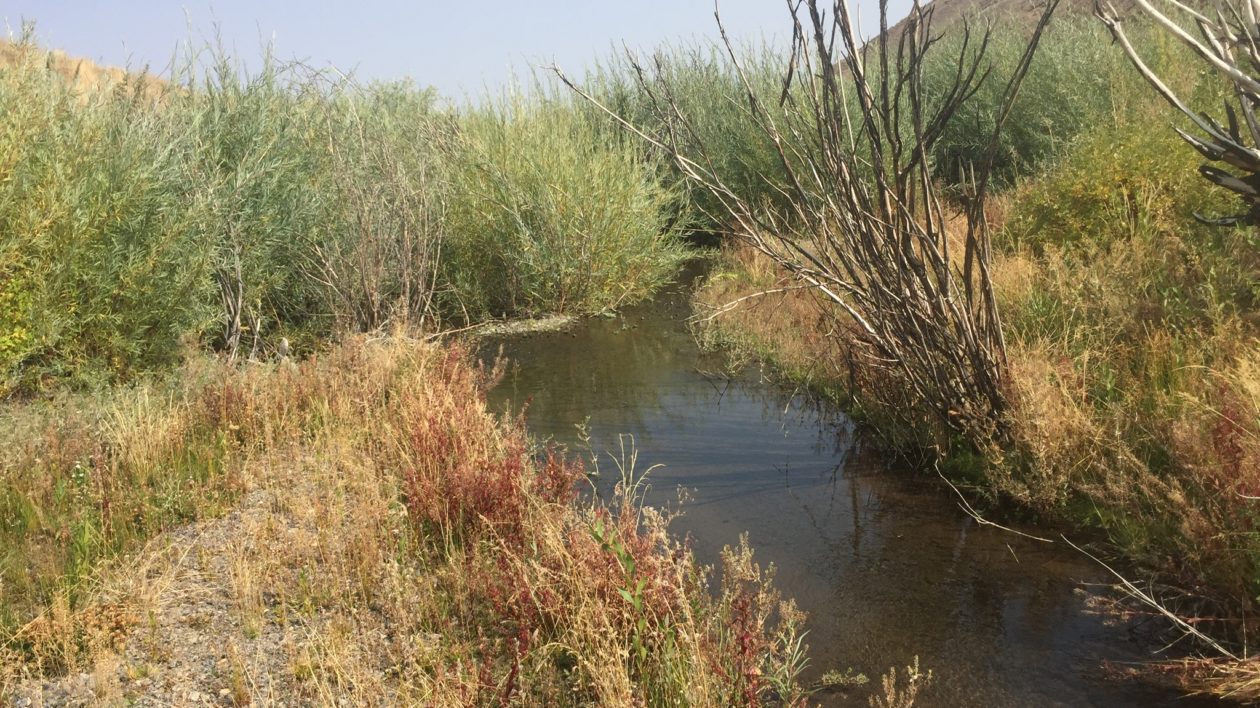
Finally, the road levels off and then drops slightly, crisscrossing the stream. I pull my car to the side and hop out, eager to look. The stream at the road crossing isn’t much, maybe a foot of water and no cover for trout.
A land survey rig rolls by me, stops, backs up. A window rolls down.
“You okay out here?” asks the passenger.
“I’m fine, just going trout fishing in this creek,” I reply.
A pause. A long pause.
“Fishing?” Yet another pause. “Well, good luck.”
He didn’t add, “You’ll need it,” but he might as well have.
I live near some of the best trout waters in North America. But here I am again, on a wild goose chase. Because of these fish.
Why do I keep searching out these tiny streams? Why do I go to these lengths to catch trout that might go 8 inches, if I’m lucky? Why cutthroat trout?
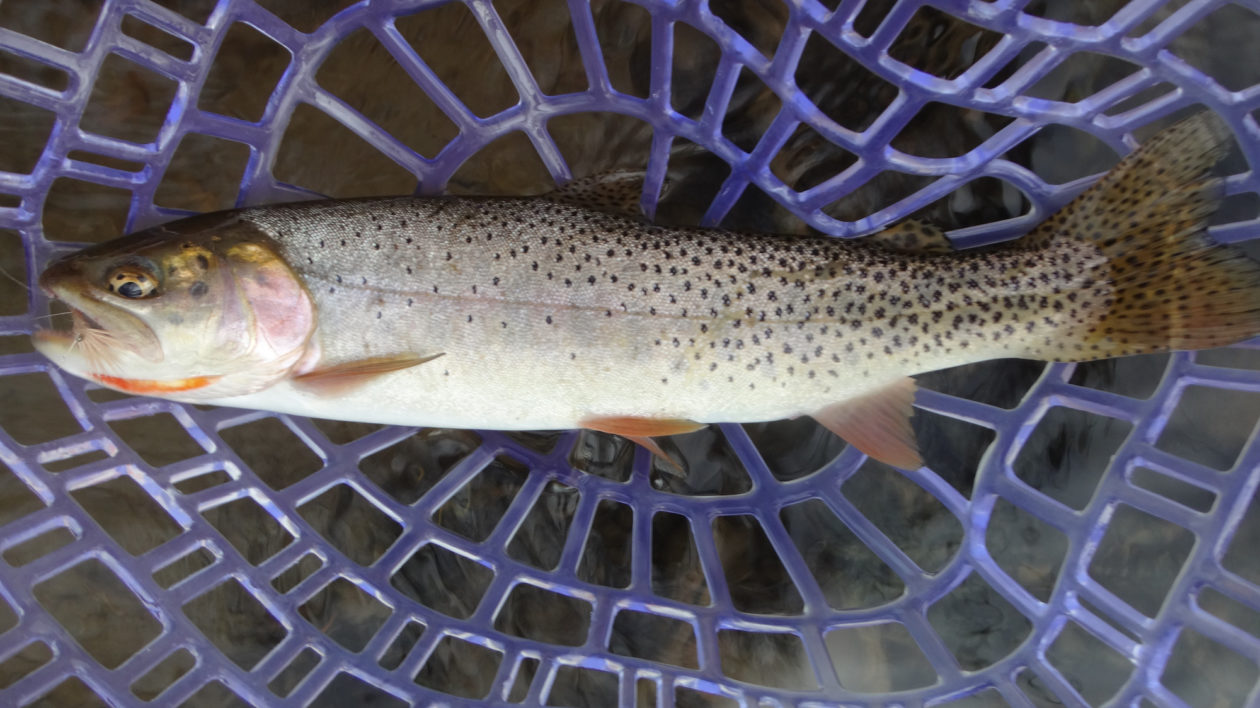
Meet the Cutthroat
The cutthroat trout (Oncorhynchus clarkii) was found widely in western North America, from the Rockies to the Pacific. The trout’s name comes from the bright red slash on its jaw. The cutthroat’s story is really one of geology, written in the stunning canyons and mountain valleys is a story of floods and glaciation and upheaval. Through that, cutthroat trout populations became isolated from each other. This gave rise to a diversity of cutthroat subspecies and strains, colorfully different fish found in wildly different habitats. For taxonomic nerds like me, this is no small part of their appeal.
The late trout expert Robert Behnke identified 14 subspecies (of which two are extinct). Recent genetic research suggests even more, as fellow native trout enthusiast Gary Marston describes. Whatever the case, a quest for native cutthroats is an excuse to explore some of the most stunning places in western North America. I’ve caught cutthroats at 11,000 feet in the Colorado Rockies and in expansive lakes in Nevada. I’ve caught fish that spend part of their time in the ocean and in the Alaskan rainforest, as well as cutthroats in the arid semidesert of eastern Oregon. I’ve caught them with elk bugling in the background in New Mexico and while watching bison in Yellowstone.
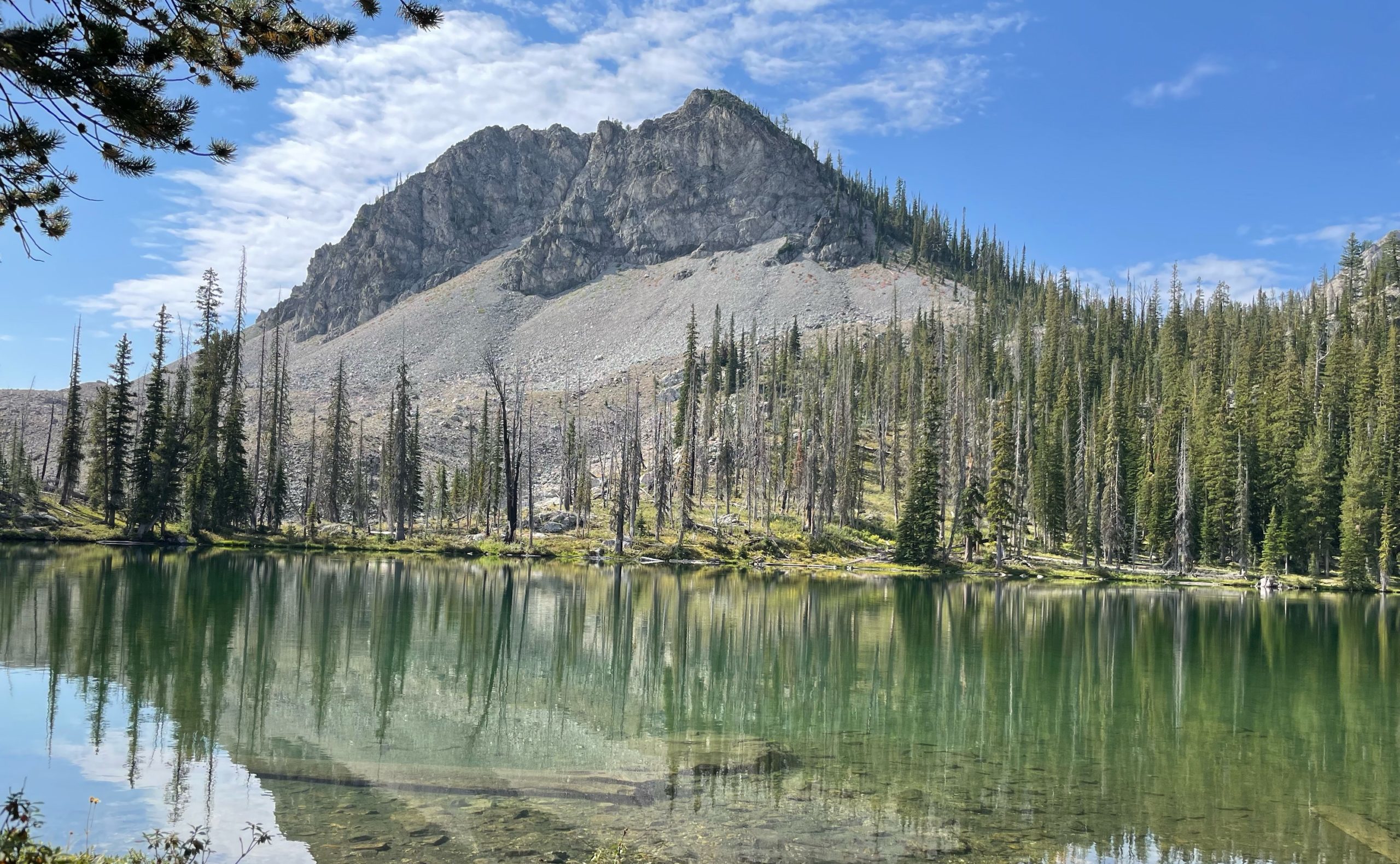
Despite all these experiences, I can today find cutthroat in only a fraction of their historic waters. This is due to a host of familiar problems including habitat degradation, overgrazing and water pollution. Climate change poses additional risk; a study published in the Proceedings of the National Academy of Sciences projected that cutthroat trout will lose 58 percent of their current habitat by 2080 due to warming waters.
But the biggest threat to native cutthroat trout? As an angler, this one hits hard. Because the biggest threat to cutthroat trout has been recreational angling. Not necessarily the harvest of fish. Rather, it’s the willy-nilly stocking of non-native trout that has characterized fisheries management for more than a century.
As Behnke put it:
“The most significant aspect of cutthroat trout life history, ecology and biology that can be offered to explain their great decline in distribution and abundance concerns the cutthroat trout’s susceptibility to hybridization with rainbow trout and to replacement by brown trout and brook trout in streams and by lake trout in large lakes.”
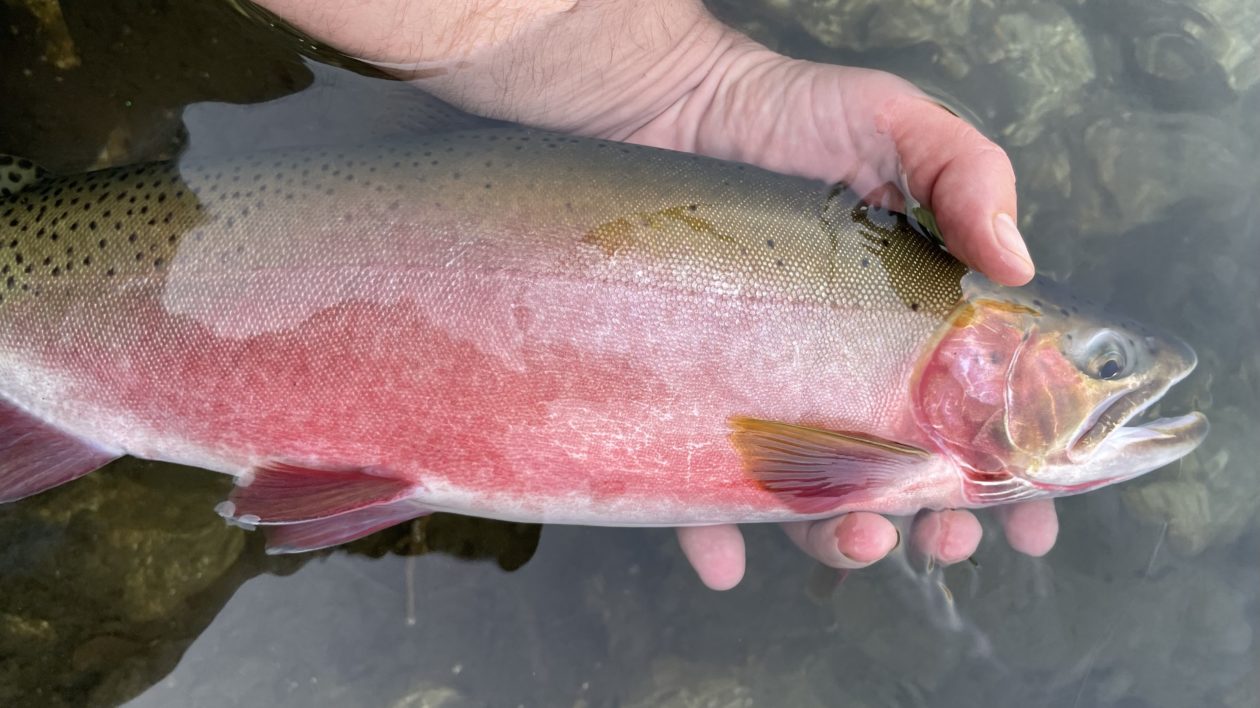
The extent of the historic stocking effort is mind boggling. Non-native trout were stocked by train, plane and horseback. Buckets of fish were dumped in national parks and wildernesses. It means that, today, you often find the same gamefish wherever you go, not only in North America but around the world. It also means that to find cutthroat trout often means going to the most inaccessible and overlooked places.
The appeal of non-native trout monoculture is difficult for me to comprehend. But it persists. This year, a podcast featuring two fly fishing personalities – both of whom have done genuine good for conservation – discussed whether native fish conservation had gone “too far.” They called non-native trout “sacred” and decried efforts to restore cutthroats, even though these native trout only occupy a fraction of their range. This can fill an angler-naturalist with despair.
But attitudes – and angling aesthetics and ethics – are changing.

Trout in the Desert
One of the inaccessible and overlooked spots is this tiny stream in Nevada, the one I have gone to seek Humboldt cutthroat trout. I pick my way along this stream, searching for where it might flow into bigger water.
The brush grows thicker but the stream remains small. As I approach a connecting canyon, I realize I started on the wrong creek. This is a minor tributary, but I see where it runs into the stream I planned to fish. It isn’t big, or particularly impressive, but there’s more water. And: a beaver dam.
I see the clipped saplings a second before my eye catches a pool of water. And just like that, the trajectory of the day changes. I crouch down and crawl towards the pool. As beaver dams go, this one is small and silty. But I can make out a deep spot, and there, suspended, is a trout. I fidget with my fly rod as if it’s the first fish I’ve ever seen. I tie on a small Humpy but by the time I look back up, the trout has vanished.
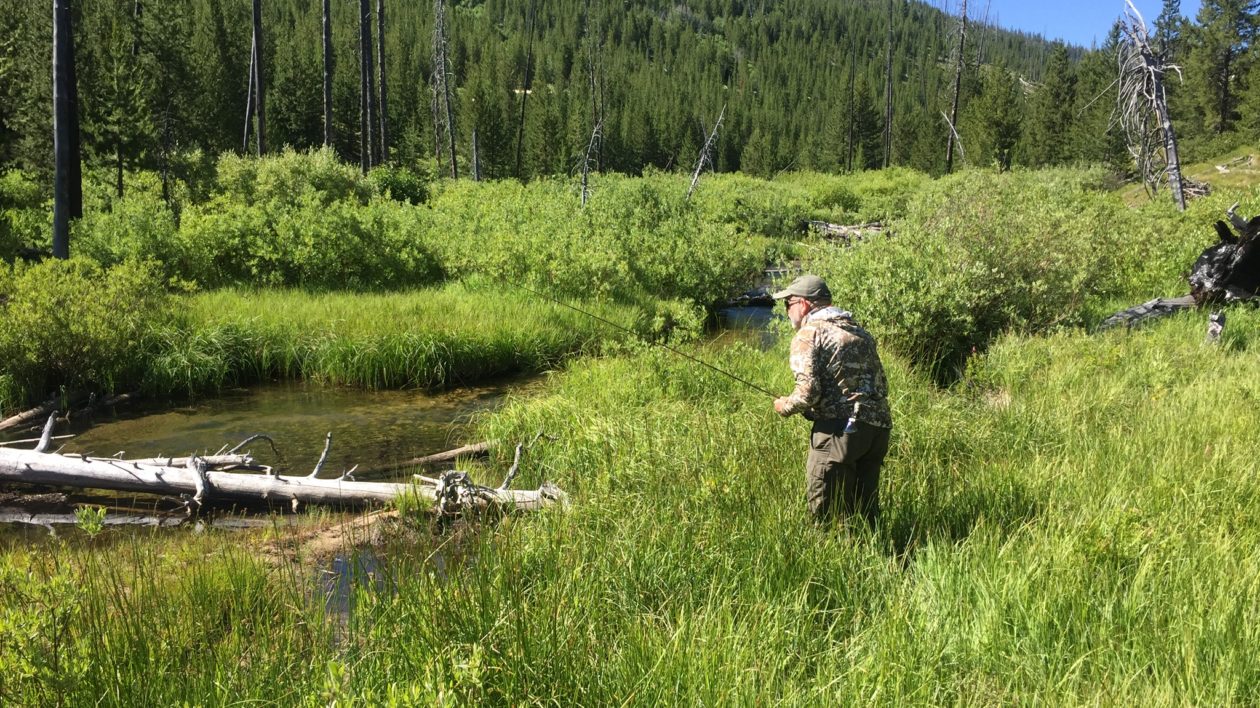
I make cast, then another. Curse. Did I somehow spook the fish? I prepare to cast again when a loud splashy rise breaks the surface. My fly lands right where the fish fed, and immediately disappears. It’s a 7-inch fish, but my 6-foot 3-weight still bends.
Stream-form Lahontan, Humboldt trout: whatever you call them, they are among the most beautiful little fish I’ve seen. Its sides are covered in dark black spots and more muted splotches, all set on a golden-hued body. The red slash shines brightly in the sun. I take a quick photo, slip the hook and release the fish. Two casts later, another is on the line.
I fish the beaver pond for another 20 minutes, catching several more fish, and then head downstream. The banks are lined with wild rose and other thorny plants, and I regret my decision to wear shorts and water sandals. The thorns tear at my knees, but I push through to another pool. I cast into a ripple, and my fly is immediately engulfed.
It’s a stream that no one thought to stock. And that comes with an added benefit: It also means that few think to fish it. I have the place to myself. The thorns may shred my legs to hamburger, my sandals may fall apart on the trail, but each pool holds fish. Hungry, bright fish. The dry fly often barely touches the surface before it is smashed.
So many destination rivers, often the tailwaters below dams, have become scenes. Dudes decked out in the latest fashions. Fly rods that cost more than some cars I’ve owned. Fish celebrations carefully crafted for Instagram.
Give me rutted roads and gruelling hikes. Give me small fish and smaller crowds. Give me cutthroat trout.
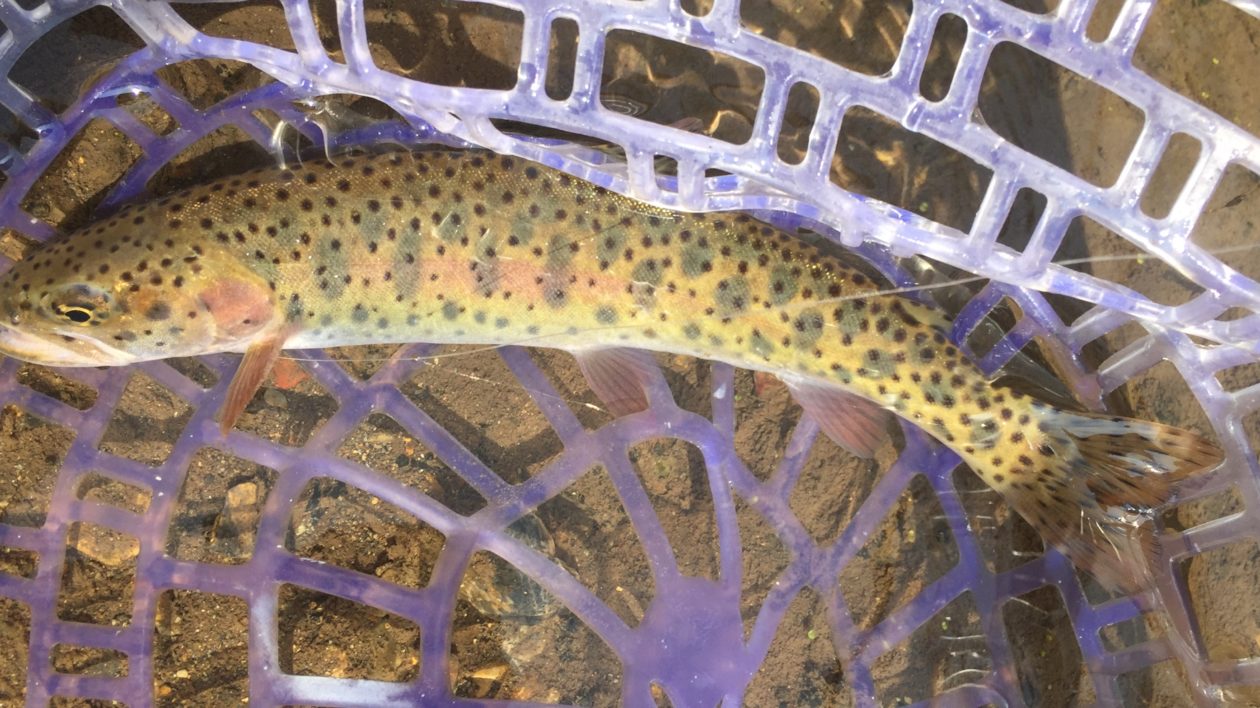
Cutthroats Rising
Fortunately, more anglers share this appreciation. Just as anglers helped get cutthroats into this mess, it will be anglers who help get them out of it.
There have been a number of successful efforts to protect and restore cutthroats to their native range. This often involves removing non-native species. Sometimes it means installing barriers on streams so invasive fish can’t recolonize. Both of these tactics can be controversial. But returning native fish restores more than fishing opportunity. It restores a keystone species to freshwater ecosystems.
Given the controversies, angler support can make or break restoration efforts. That’s why growing interest is heartening. One way to engage new anglers is by “Cutthroat Slams.” You catch the cutthroat subspecies in a given state and get an award. And ideally, the fee you pay goes for native trout conservation.
That’s the case for the Utah Cutthroat Slam, the brainchild of my friend Brett Prettyman. Catch Utah’s four cutthroat subspecies and you get a medallion. By the time you read this, 1,000 anglers will have completed the slam.
More important, the money has funded inspiring projects, like restoring cutthroats to the upper Weber River. The Cutthroat Slam helped fund fish ladders to help cutthroats get through barriers.
The Western Native Trout Challenge involves catching native fish in a dozen participating states, with education and conservation front and center. And growing organizations like the Native Fish Coalition show that anglers can be powerful advocates for freshwater biodiversity.
I’m a taxonomic nerd. I love chasing the different subspecies and strains of native trout. But mainly, I love the places these fish take me.
The Places You Find Trout
I come to a little riffle along a deeper pool. I flip out an elk hair caddis. A little trout smacks it but isn’t hooked. I immediately roll the fly back out and a larger fish slurps it, almost daintily. It feels like a good fish, but when I guide it into the net it’s 12 inches. Bigger than any I’ve caught today but a far cry from even a middling trout at Pyramid Lake. I don’t care. It’s perfect.
I sit for a bit and soak my bleeding legs in the stream, eat some jerky and then continue my hike. I hear a rumbling followed by what sounds like someone screaming. I look up to the rough road that runs far above the stream, and see a flatbed truck idling, a rancher staring down at me. Fears of trespass immediately cross my mind. The guy animated about something.
His words reach me. “DO. YOU. NEED. HELP?” he yells. “ARE. YOU. OKAY?”
It takes me a second to register this. As I do, I’m hit with a realization. There are many ways to measure a quality trout stream. One might be how many locals check in on your wellbeing when they see you with a fishing rod. I’m two for two for today.
I recognize the futility of yelling back up to him, so I simply raise my arm and give an enthusiastic thumbs up. I’m doing fine. Better than fine. I’m exactly where I want to be.
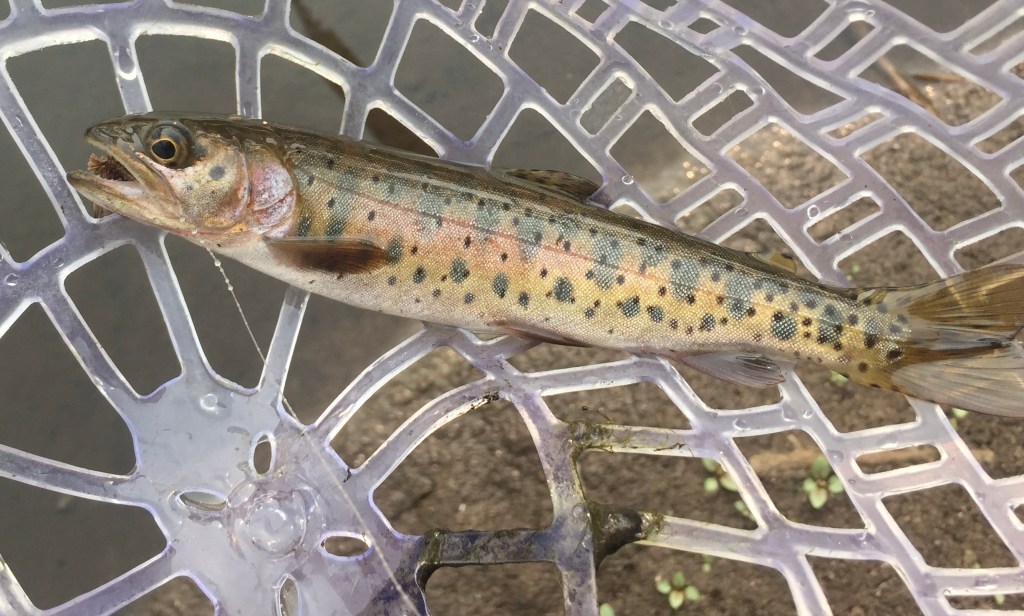



Nice article which captures my thoughts well. All alone on a brushy little crick that nobody else “bothers” with. Thanks!
As a fellow cutthroat trout lover, enthusiastic, advocate, I appreciate your writing and sharing. I fish mainly for searun cutthroat but have caught Westslope, Rio Grande, Yellowstone, Lahontan. It breaks my heart to read Instagram posts of people bragging about the big rainbows and brown trout in waters that were, at one time , purely cutthroat waters.
Keep up the good work and let me be know how I can help. Jeff Gottfried/ jeff@gottfried.net
It’s folks like you who will drive the restoration of our endangered native trout. Thank you.
I enjoyed this piece immensely. Here here for our beloved native trout species and those who endeavor to protect them and their habitat.